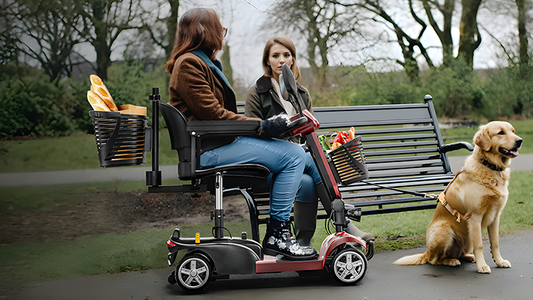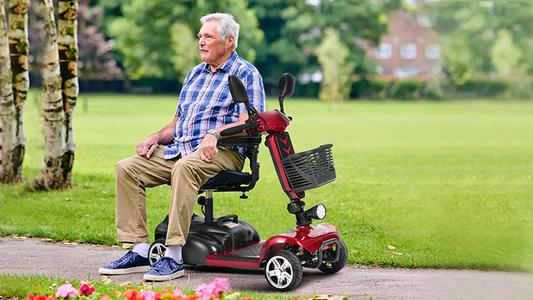How to Choose a Mobility Scooter
7 Essential Tips for Choosing the Right Mobility Scooter
-
Indoor vs. Outdoor Use
Decide where you'll primarily use your scooter. For indoor use, consider a three-wheel scooter for better cornering, or a four-wheel scooter with smaller wheels and a tight turning radius. Measure doorways to ensure the scooter fits, remembering that hinged doors can reduce clearance by up to 2 inches. For outdoor use, opt for a four-wheel scooter with larger or pneumatic wheels for smoother rides on uneven surfaces. If you frequently encounter rough terrain, choose a scooter with higher ground clearance to avoid getting stuck. -
Scooter Size
The scooter's size should match your needs. Compact models work well for short distances or indoor use but may provide a bumpier ride on uneven ground. Medium-sized scooters offer better travel range for local errands but can be harder to maneuver in tight spaces. Large scooters are ideal for rural areas, providing greater speed and range, but they require adequate storage space. -
Comfortable Fit
A well-fitted scooter is key to comfort. Ensure the seat height allows your feet to rest flat on the footrest, with knees bent at 90 degrees. The tiller should be easy to reach without straining your back. Taller users might prefer three-wheel scooters for extra legroom. Check the weight capacity to ensure it supports both you and your belongings. -
Easy-to-Use Controls
Standard tillers require both hands and manual dexterity to operate. Scooters with delta tillers are more user-friendly for those with limited hand strength or dexterity, offering control with either hand. Many models feature automatic braking when pressure is removed from the throttle, adding to safety. -
Comfortable Seating
For long hours of use, a full-sized scooter with a cushioned, contoured captain’s seat offers maximum comfort and support. Travel scooters, designed for short trips, typically have less padding and compact seating. -
Portability and Storage
If you plan to travel with your scooter, choose a portable or foldable model. Check the weight of the heaviest part for ease of lifting, and ensure it fits in your vehicle or storage area. For heavier scooters, consider using a ramp or lift for convenience. -
Inclines and Speed
For hilly areas or steep driveways, choose a scooter with a suitable maximum incline capacity. Portable scooters typically handle inclines of 6–8 degrees, while larger models can manage up to 12 degrees. Pay attention to speed as well—compact scooters often reach 4–5 mph, while larger ones can hit 8–10 mph. Always prioritize safety by slowing down on corners and using appropriate speed settings for indoor or outdoor environments.
By considering these factors, you can find a mobility scooter that perfectly matches your lifestyle and enhances your independence.



